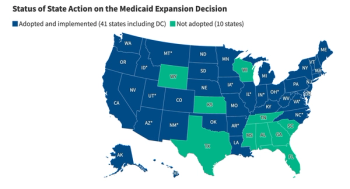
Managed care saves budgets in prison facilities
California has adopted some managed care principles, hoping to achieve accessible, cost-effective care.
NATIONAL REPORTS-Dexter Brown, 41, is not the only prison inmate who has complaints about his medical care. Charged with a 2003 robbery, the wheelchair bound inmate with kidney failure and a weak heart is housed in a single cell on the first floor of California's Vacaville prison.
"I've seen improvement since I've been here, but the biggest problem is the attitude of the medical staff and its adversarial approach," he says.
In 2001, a federal class-action lawsuit alleged that the medical care in the state's prison system was so poor that it amounted to "cruel and unusual punishment." A receivership was created in 2006 to make the structural, clinical, budgetary and organizational changes necessary to reform healthcare services. Clinical staff now report to the receivership, but once adequate quality is maintained, the state will resume management of medical services.
In 2006, one inmate died each week in the California prison system because of poor medical care-often attributed to overcrowding. The death rate has dropped by 10% to 12% since the federally appointed receiver took over. Estimates indicate that reducing inmate visits to the community for medical services could save $200 million to $400 million annually.
"A lack of access to care in general and more specifically to an appropriate provider have been responsible for many of the deaths in prison," says Joseph Bick, MD, chief medical executive of the 960,000-square foot California Medical Facility at Vacaville.
In 2008, referrals were out of control, according to Ricki Barnett, MD, deputy medical executive, utilization management for the Department of Corrections.
"We were faced by a hefty appetite for specialty care with little staff to address prison requests for outside medical care," Dr. Barnett says. "We brought many of the services inside that were once referred out."
Newsletter
Get the latest industry news, event updates, and more from Managed healthcare Executive.





















































